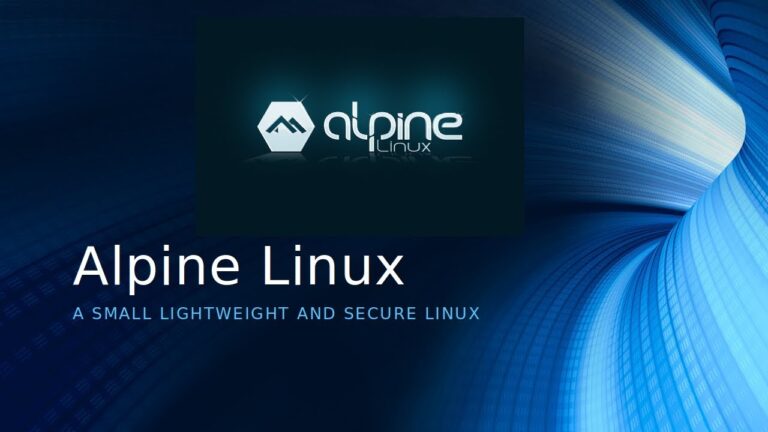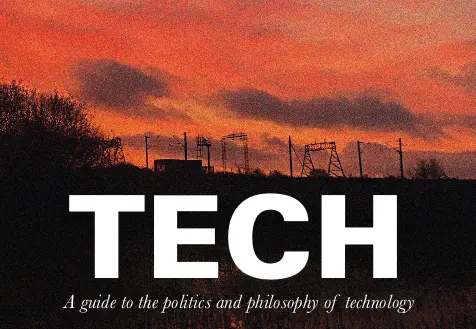Curious about blockchain technology and its impact on various industries?
This article will break down the basics of blockchain, its benefits, potential applications, challenges, and how businesses can leverage this innovative technology.
From cryptocurrencies to supply chain management, voting systems, and smart contracts, blockchain is revolutionizing the way transactions are conducted.
Discover how blockchain is enhancing security, efficiency, and transparency in the digital age, and what the future holds for this groundbreaking technology.
Key Takeaways:
What Is Blockchain Technology?
Blockchain technology is a revolutionary concept that has gained significant attention in various fields, including the circular economy (CE). It is a decentralized, distributed ledger system that enables secure and transparent transactions.
One of the key features of blockchain technology is its ability to store data in a series of interconnected blocks, ensuring that information cannot be altered retroactively without the alteration of all subsequent blocks. This inherent security feature makes it ideal for applications requiring trust and transparency.
In the context of the circular economy, blockchain plays a pivotal role in streamlining supply chain management processes, tracking the provenance of materials, and ensuring sustainability. Through smart contracts, the technology facilitates automated transactions, reducing the need for intermediaries and expediting processes.
How Does Blockchain Technology Work?
Blockchain technology operates through a network of interconnected nodes that store transaction data in blocks, forming a chain that is immutable and secure. Each block contains a cryptographic hash of the previous block, creating a tamper-proof system.
The decentralized nature of blockchain ensures that no single entity has control over the entire network, making it highly resilient to fraud or tampering.
One of the key features of blockchain technology is its robust encryption methods, such as asymmetric cryptography, which ensures secure data storage and transmission.
In the realm of academic literature, researchers like Böckel have studied the potential applications of blockchain in the circular economy, highlighting its role in enabling transparent and traceable supply chains.
The consensus algorithm utilized in blockchain, such as Proof of Work or Proof of Stake, plays a crucial role in validating transactions and maintaining the integrity of the network.
What Are the Benefits of Blockchain Technology?
The benefits of blockchain technology extend beyond improved security and transparency; they encompass the establishment of a robust ecosystem for diverse applications and sustainable growth. Organizations like the Ellen MacArthur Foundation and initiatives like the ReSOLVE framework and Enterprise Ethereum Alliance are leveraging blockchain for positive implications.
Blockchain technology plays a pivotal role in revolutionizing ecosystems across various sectors. By offering unparalleled data integrity and decentralization, blockchain enables innovative applications with enhanced efficiency and reduced operational costs. Its immutable nature enhances trust among stakeholders, leading to increased collaboration and streamlined processes. The utilization of blockchain in supply chain management, healthcare, finance, and energy sectors has shown significant improvements in data security and operational transparency.
Decentralization
Decentralization is a fundamental principle of blockchain technology, offering industries the opportunity to operate without central authorities or intermediaries. It serves as a driver for innovation and efficiency while overcoming traditional barriers in the centralized systems.
One of the key aspects of decentralized systems is their ability to ensure transparency and immutability through distributed ledger technology. By removing the need for a central governing body, blockchain enables secure and trustless transactions among peers. This model not only enhances security but also fosters collaboration and inclusivity.
Consortium blockchain models, which involve multiple organizations working together to operate a blockchain network, exemplify how decentralization can be applied in a group setting. Such models allow for shared governance, increased scalability, and improved efficiency in processes.
The principles that underpin decentralized systems include consensus mechanisms like Proof of Work and Proof of Stake, which enable network participants to agree on the state of the blockchain. Smart contracts, self-executing agreements with predefined rules, play a crucial role in automating processes and reducing the need for intermediaries.
Transparency
Transparency is a key feature of blockchain technology, providing stakeholders with real-time visibility into transactions and data sharing. It fosters trust within the ecosystem, drives growth, and addresses challenges related to information asymmetry and trust issues.
Through the decentralized and immutable nature of blockchain, each transaction is recorded and shared across a network of computers, ensuring that all involved parties have access to the same information. This transparency not only eliminates the need for intermediaries but also establishes a verifiable record of events, reducing the potential for fraud and enhancing overall accountability.
- By promoting open access to data and smart contracts, blockchain technology enables more efficient and secure transactions, which in turn fosters a climate of trust among stakeholders.
- The transparency provided by blockchain also plays a vital role in driving sustainable growth, as it promotes innovation, collaboration, and compliance with regulatory standards.
- One of the significant advantages of blockchain in enhancing transparency is its ability to mitigate challenges such as data manipulation, counterfeit products, and unauthorized modifications, thus providing a more secure and reliable ecosystem for transactions.
Security
Security is a hallmark of blockchain technology, offering immutable data storage, cryptographic verification, and resistance to tampering. Its robust security features make it a viable solution for various applications, addressing challenges and ensuring data integrity for the future.
Blockchain’s secure data storage is achieved through its decentralized nature, where information is distributed across a network of nodes, making it resilient to single points of failure. The cryptographic verification mechanisms employed ensure that transactions are secure and transparent, minimizing the risk of fraud or unauthorized access.
Blockchain’s resistance to tampering is rooted in its consensus protocols, such as Proof of Work or Proof of Stake, which validate transactions and secure the network against malicious actors. These principles create a trustless environment where trust is established through mathematical algorithms rather than intermediaries.
Efficiency
Efficiency is a driving force behind the adoption of blockchain technology, as it streamlines processes, reduces intermediaries, and enhances data integrity. By reviewing existing literature on blockchain implementation, we can identify key drivers and barriers to efficiency in the circular economy.
Research indicates that blockchain’s decentralized nature minimizes the need for trust in intermediaries, leading to faster transactions and lower costs. The immutability of blockchain records ensures data integrity and security, essential in the era of digital transformation.
This transformation has significant implications for resource utilization and waste reduction in a circular economy. Studies show that blockchain applications, such as smart contracts and supply chain tracking, can optimize resource allocation and enhance sustainability efforts. Challenges such as scalability, interoperability, and regulatory concerns must be addressed for blockchain technology to realize its full potential in optimizing processes and reducing costs.
What Are the Potential Applications of Blockchain Technology?
Blockchain technology has diverse applications across industries, including the implementation of smart contracts, supply chain management, voting systems, and decentralized finance. The adoption of blockchain is being driven by the need for increased efficiency, transparency, and security.
Smart contracts, enabled by blockchain, automate the execution of agreements, improving accuracy and reducing the need for intermediaries.
In supply chain management, blockchain enhances traceability, ensuring the authenticity of products and reducing fraud.
Voting mechanisms on blockchain platforms offer secure and transparent elections, enhancing trust in democratic processes.
Decentralized finance leverages blockchain to enable peer-to-peer transactions, loans, and investments, bypassing traditional financial institutions.
Cryptocurrencies
Cryptocurrencies represent one of the pioneering applications of blockchain technology, with Bitcoin and Ethereum leading the way in reshaping financial transactions and decentralized digital assets. Their integration with smart contracts is revolutionizing industries and the circular economy paradigm.
Through the transparent and immutable nature of blockchain, cryptocurrencies have provided a trustless environment where transactions are secure and verifiable without the need for intermediaries. This has significantly impacted asset management by offering efficient and cost-effective ways to store and transfer value globally. The introduction of smart contracts has streamlined processes within industries, automating agreements and reducing administrative overhead. This shift towards automation and decentralization is transforming traditional business models and fostering innovation across various sectors.
Supply Chain Management
Blockchain technology has transformed supply chain management by enhancing traceability, reducing fraud, and optimizing logistics operations.
By utilizing decentralized, immutable ledgers, blockchain technology provides a secure and transparent way to track products throughout the supply chain process, ensuring authenticity and quality assurance. This streamlined approach not only minimizes human error but also speeds up transactions, leading to more efficient operations.
The widespread adoption of blockchain faces challenges such as scalability issues, lack of standardization, and concerns about data privacy. Industries like healthcare and food distribution are recognizing the potential of blockchain but are cautious due to these hurdles. Overcoming these obstacles will be crucial for maximizing the benefits of blockchain technology in supply chain management.
Voting Systems
Blockchain-based voting systems offer secure, transparent, and tamper-resistant solutions for electoral processes in various industries. By leveraging blockchain’s capabilities, organizations can address the drivers and barriers to reliable voting systems in the context of the circular economy.
One of the key advantages of blockchain-enabled voting systems is the enhanced security they provide. The decentralized nature of blockchain technology ensures that votes are securely stored and cryptographically protected from unauthorized access. This significantly reduces the risk of fraud or manipulation, bolstering trust in the electoral process.
The transparency offered by blockchain ensures that every vote is recorded immutably, enabling a verifiable audit trail. This level of transparency enhances the integrity of the voting process, as stakeholders can independently verify the results, fostering accountability and trust.
Another crucial aspect of blockchain-enabled voting systems is their resistance to tampering. The immutability of blockchain records makes it virtually impossible to alter or delete votes retroactively. This feature safeguards the integrity of the electoral process, ensuring that each vote is counted accurately and reliably.
Smart Contracts
Smart contracts are self-executing agreements coded on blockchain platforms, streamlining transactions, reducing costs, and enhancing trust between parties. Their adoption in various industries is driven by the need for automation, efficiency, and secure contract execution.
These digital contracts have the potential to revolutionize traditional contract processes by providing transparency and security through blockchain technology. By automating contract enforcement and verification, smart contracts eliminate the need for intermediaries and reduce the risk of fraud.
The use of smart contracts can significantly speed up processes that are typically slow and burdened by manual tasks. They enable real-time agreement execution based on predefined conditions, making transactions faster and more efficient.
What Are the Challenges and Limitations of Blockchain Technology?
Despite its transformative potential, blockchain technology faces challenges related to scalability, regulatory uncertainties, and energy-intensive mining processes. These limitations impact its widespread adoption and present implications for industries seeking blockchain solutions.
Scalability remains a critical hurdle for blockchain networks, as the technology must scale to process a high volume of transactions without compromising efficiency or decentralization. Many current blockchain platforms struggle with slow transaction speeds and high fees during peak usage periods, which hinder their applicability in industries requiring swift and cost-effective transactions.
Regulatory uncertainties surrounding blockchain technology create barriers to its integration into existing legal frameworks. The lack of consistent regulations globally can impede innovation and investment, as organizations may hesitate to implement blockchain solutions due to compliance concerns and legal risks. This uncertainty may also lead to a fragmented landscape for blockchain development, with varying standards and requirements across different jurisdictions.
The energy-intensive nature of blockchain mining, particularly for proof-of-work consensus mechanisms, raises significant environmental concerns. The extensive computational power required for mining contributes to high energy consumption and carbon emissions, which conflict with sustainability goals and environmental initiatives in various industries. This environmental impact has prompted calls for more energy-efficient consensus algorithms and sustainable practices in blockchain operations.
These challenges have notable implications for industries exploring blockchain applications, as they must navigate technical constraints, regulatory complexities, and environmental considerations. To address these issues, industry stakeholders are exploring strategies such as scalability solutions like sharding and layer-two protocols to enhance network performance and efficiency. Regulatory advocacy efforts are also underway to promote clearer guidelines and frameworks that support blockchain innovation while ensuring compliance and legal certainty.
Initiatives focused on promoting energy-efficient consensus mechanisms, such as proof-of-stake, aim to reduce the carbon footprint of blockchain networks and align them with sustainable practices. Collaboration between industry players, policymakers, and environmental experts is essential to drive progress towards a more scalable, compliant, and eco-friendly blockchain ecosystem that can realize its transformative potential across diverse sectors.
Scalability
Scalability remains a pressing concern for blockchain technology, as the growing demand for transaction processing challenges the network’s capacity. Addressing scalability issues is crucial for the future adoption of blockchain in industries, requiring innovative solutions to overcome existing barriers.
One of the primary consequences of limited scalability in blockchain technology is decreased transaction throughput, which can lead to delays, increased costs, and inefficiencies. This hinders the seamless integration of blockchain in sectors such as finance, healthcare, and supply chain management.
To enhance scalability, key drivers such as sharding, off-chain solutions, and consensus mechanism improvements are being explored. Implementing these solutions faces challenges like security risks, interoperability issues, and governance complexities, highlighting the need for comprehensive strategies to achieve effective scalability enhancements.
Regulation
Regulatory frameworks pose a significant challenge to the widespread adoption of blockchain technology, as varying legal requirements and compliance standards create uncertainty for industries.
Blockchain applications across sectors are poised to revolutionize operations through enhanced transparency and security. The nuanced nature of regulatory landscapes presents hurdles that require careful navigation. Industries such as finance, healthcare, and supply chain management must grapple with divergent compliance mandates, adding layers of complexity to blockchain implementations. Finding a harmonized approach to address these challenges is crucial for fostering innovation and realizing the immense potential of blockchain technology.
Energy Consumption
The energy-intensive nature of blockchain mining processes has raised concerns about environmental sustainability and operational costs. Addressing the energy consumption challenges of blockchain technology is essential to align with regulatory standards and ensure a sustainable future for the technology.
Blockchain’s energy consumption, primarily driven by mining activities that secure transactions and maintain the network, has drawn attention to its carbon footprint and ecological repercussions. The process involves vast computational power and electricity, translating into significant greenhouse gas emissions.
Environmental sustainability and energy efficiency have emerged as critical considerations in the blockchain sector, urging stakeholders to adopt sustainable practices and explore alternative consensus mechanisms.
How Can Businesses Utilize Blockchain Technology?
Businesses can leverage blockchain technology to streamline processes, enhance security measures, and improve trust and transparency in their operations. By carefully navigating the drivers and barriers of blockchain implementation, companies can unlock the full potential of this transformative technology.
-
Blockchain technology offers businesses a decentralized and secure way to record transactions, store data, and automate various processes. Through its immutable and transparent nature, blockchain ensures data integrity and reduces the risk of fraud or tampering.
-
In industry sectors such as supply chain management, blockchain facilitates traceability, enabling companies to track products from origin to delivery, enhancing efficiency and accountability.
-
Challenges like scalability, interoperability, and regulatory compliance can hinder widespread adoption of blockchain solutions in the circular economy. Companies need to address these hurdles to fully harness the potential benefits of blockchain technology.
Streamlining Processes
Blockchain technology facilitates the automation and optimization of business processes, reducing administrative burdens and operational inefficiencies. By reviewing existing literature on blockchain implementation in industries, companies can identify best practices for streamlining operations within the circular economy framework.
Through the use of blockchain technology, businesses are able to create more secure and transparent networks for transactions, eliminating the need for intermediaries and reducing the risk of fraud. This enhanced security and transparency not only speeds up processes but also minimizes costs associated with traditional methods of record-keeping. Industries such as supply chain management, healthcare, and finance have seen substantial benefits from implementing blockchain to streamline data management and enhance trust among stakeholders.
Enhancing Security
Enhancing security is a paramount goal for businesses adopting blockchain technology, as it provides robust data protection, identity verification, and transaction integrity. Overcoming security challenges and implementing secure blockchain solutions are essential drivers for sustainable growth within the circular economy.
Blockchain technology’s decentralized nature and cryptographic algorithms play a pivotal role in safeguarding sensitive information from unauthorized access and tampering. Through its immutable ledger system, blockchain ensures transparency and accountability in transactions, mitigating the risks of fraud and data breaches.
The integration of smart contracts in blockchain enhances security by automating and enforcing contract terms, reducing the likelihood of disputes and fraudulent activities. These advancements not only fortify cybersecurity but also instill trust among stakeholders in the modern digital ecosystem.
Improving Trust and Transparency
Blockchain technology fosters trust and transparency in business transactions by providing a verifiable record of data exchange and asset ownership. Building trust through transparent blockchain systems can drive business growth and overcome barriers to adoption within the circular economy ecosystem.
One of the key ways blockchain enhances trust and transparency is through ensuring data integrity. This means that once information is recorded on the blockchain, it cannot be altered or tampered with, creating a sense of reliability and accuracy. The audit trails provided by blockchain allow for a comprehensive history of transactions, enabling parties to trace back every interaction. These aspects contribute to establishing a high level of credibility and confidence in business dealings.
- Immutable records on the blockchain ensure that once data is entered, it remains unchanged, providing a secure and unalterable source of truth for all parties involved.
- Despite these benefits, organizations may face challenges when implementing transparent blockchain solutions, such as regulatory compliance issues or the need for technological expertise. Overcoming these barriers requires a concerted effort to educate stakeholders on the advantages and establish collaboration among industry players.
By leveraging the enhanced trust and transparency that blockchain offers, businesses can create more efficient and reliable ecosystems that foster sustainable practices. This not only benefits individual organizations but also contributes to the overall advancement of the circular economy, promoting responsible resource management and ethical business conduct.
What Is the Future of Blockchain Technology?
The future of blockchain technology holds immense potential for reshaping industries, driving innovation, and fostering sustainable practices within the circular economy. Overcoming current challenges and exploring new applications will be crucial for realizing the full transformative impact of blockchain in the years to come.
One of the key aspects contributing to blockchain’s promising future is its ability to decentralize systems, providing increased security and transparency in transactions. Blockchain technology has the capacity to streamline supply chains, enhance traceability, and reduce fraud in various sectors, from finance to healthcare. As industries increasingly recognize the benefits of blockchain, the technology is poised to revolutionize traditional processes and establish new standards for efficiency and trust.
Frequently Asked Questions
What is Blockchain technology and how does it work?
Blockchain technology is a decentralized, distributed ledger that records transactions across a network of computers. It uses cryptography to secure and verify transactions, creating a tamper-proof system that is transparent and immutable.
What are the benefits of using Blockchain technology?
Blockchain technology has several benefits, including increased security, transparency, and efficiency. It eliminates the need for intermediaries, reduces transaction costs, and streamlines processes. It also allows for better traceability and accountability.
How is Blockchain technology being used in different industries?
Blockchain technology is being utilized in a variety of industries, such as finance, supply chain management, healthcare, and voting systems. It has the potential to revolutionize how data is stored, shared, and protected in various sectors.
What are some challenges facing the widespread adoption of Blockchain technology?
One of the main challenges facing Blockchain technology is scalability, as the current infrastructure cannot handle large amounts of data. There are also concerns about regulatory issues, interoperability, and the need for education and awareness about the technology.
What are some key insights about Blockchain technology?
Some key insights about Blockchain technology include its potential to disrupt traditional industries, the importance of collaboration and standardization, and the need for proper governance and risk management. It is also essential to understand the limitations and trade-offs of using Blockchain technology.
How can businesses and individuals benefit from understanding Blockchain technology?
By understanding Blockchain technology, businesses and individuals can stay ahead of the curve and identify potential opportunities to improve their processes and operations. It also allows for informed decision-making and the ability to adapt to a rapidly changing technological landscape.




